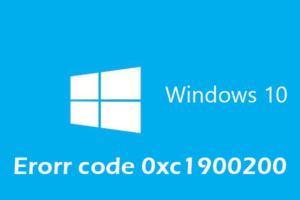-
Table of Contents
- The Impact of Microsoft Removing WordPad from Windows
- Alternatives to WordPad: Exploring Microsoft’s Decision
- The Evolution of Word Processing: Microsoft’s Move Away from WordPad
- User Reactions: Microsoft’s Decision to Remove WordPad
- The Future of Word Processing: Microsoft’s Strategy without WordPad
- Q&A
“Streamlining Windows experience: Microsoft bids farewell to WordPad.”
Microsoft has recently announced its decision to remove WordPad from Windows.
The Impact of Microsoft Removing WordPad from Windows
Microsoft is a technology giant that has been at the forefront of the software industry for decades. One of its most popular and widely used applications is WordPad, a basic word processing program that has been a staple in Windows operating systems for years. However, recent news has revealed that Microsoft is planning to remove WordPad from future versions of Windows. This decision has sparked a debate among users and experts about the impact it will have on the software ecosystem.
WordPad has long been a go-to option for users who need a simple and straightforward word processing tool. It offers basic formatting options, such as font styles, sizes, and colors, as well as the ability to create tables and insert images. While it may not have the advanced features of Microsoft Word, it has served as a reliable and accessible option for many users, especially those who do not require the extensive capabilities of a full-fledged word processor.
The removal of WordPad from Windows raises concerns about the accessibility of basic word processing tools for users. While there are alternative options available, such as online word processors or third-party software, the absence of WordPad from Windows could create a barrier for users who are not tech-savvy or do not have access to the internet. This could particularly impact individuals in developing countries or those with limited resources, who rely on the simplicity and availability of WordPad for their day-to-day tasks.
Furthermore, the removal of WordPad could have implications for compatibility and interoperability. Many users have become accustomed to using WordPad as a default program for opening and editing simple text files. With its removal, users may need to find alternative software or adjust their workflows to accommodate the change. This could lead to compatibility issues when sharing files with others who still use WordPad or rely on its compatibility with other Microsoft Office applications.
On the other hand, some argue that the removal of WordPad is a necessary step towards streamlining the Windows operating system. Microsoft has been working towards simplifying its software offerings and reducing redundancy. With the availability of more advanced word processing tools like Microsoft Word or free alternatives like Google Docs, some argue that WordPad has become obsolete and unnecessary.
Additionally, the removal of WordPad could free up valuable system resources and contribute to a more efficient operating system. By eliminating a built-in application that may not be widely used, Microsoft can allocate those resources to other areas, such as improving performance or adding new features to its flagship applications.
In conclusion, the removal of WordPad from Windows will undoubtedly have an impact on users and the software ecosystem. While it may simplify the operating system and free up resources, it also raises concerns about accessibility and compatibility. Microsoft’s decision reflects its ongoing efforts to streamline its software offerings, but it remains to be seen how users will adapt to this change and whether alternative options will be able to fill the void left by WordPad.
Alternatives to WordPad: Exploring Microsoft’s Decision
Microsoft is making a significant change to its Windows operating system by removing WordPad, a basic word processing program that has been a staple of the software for decades. This decision has left many users wondering what alternatives are available and why Microsoft has chosen to make this move.
WordPad has long been a popular choice for users who need a simple and straightforward word processing tool. It offers basic formatting options and the ability to create and edit documents, making it a useful tool for many individuals. However, Microsoft has decided to remove WordPad from Windows, leaving users to seek out alternative options.
One alternative to WordPad is Microsoft Word, the company’s flagship word processing program. While Word is a more robust and feature-rich option than WordPad, it also comes with a higher price tag. For users who only need basic word processing capabilities, the cost of Word may be prohibitive. Additionally, Word can be overwhelming for users who are accustomed to the simplicity of WordPad.
Another alternative to WordPad is Google Docs, a cloud-based word processing program offered by Google. Google Docs is free to use and offers many of the same basic features as WordPad, such as the ability to create and edit documents. It also allows for easy collaboration, as multiple users can work on a document simultaneously. However, Google Docs requires an internet connection to use, which may be a drawback for some users.
LibreOffice Writer is another alternative to WordPad that is worth considering. LibreOffice is a free and open-source office suite that includes a word processor, spreadsheet program, and presentation software. Writer, the word processing component of LibreOffice, offers many of the same features as WordPad, including basic formatting options and the ability to create and edit documents. It also supports a wide range of file formats, making it compatible with other word processing programs.
For users who prefer a more minimalist approach, there are several lightweight word processing programs available. One such option is AbiWord, a free and open-source word processor that focuses on simplicity and ease of use. AbiWord offers basic formatting options and the ability to create and edit documents, making it a suitable alternative to WordPad for users who don’t need advanced features.
In conclusion, while Microsoft’s decision to remove WordPad from Windows may be disappointing for some users, there are several alternatives available. Microsoft Word, Google Docs, LibreOffice Writer, and AbiWord are all viable options for users who need a basic word processing program. Each alternative has its own strengths and weaknesses, so users should consider their specific needs and preferences when choosing a replacement for WordPad. Whether it’s the robust features of Word, the collaboration capabilities of Google Docs, the open-source nature of LibreOffice, or the simplicity of AbiWord, there is a word processing program out there to suit every user’s needs.
The Evolution of Word Processing: Microsoft’s Move Away from WordPad
Microsoft is a company that has been at the forefront of the technology industry for decades. One of their most well-known products is Microsoft Word, a word processing software that has become a staple in offices and homes around the world. However, Microsoft is now making a surprising move by removing WordPad, a simpler version of Word, from their Windows operating system.
WordPad has been a part of Windows since its inception in the early 1990s. It was designed to provide users with a basic word processing tool that could handle simple tasks such as creating and editing documents. Over the years, WordPad has received updates and improvements, but it has always remained a stripped-down version of Microsoft Word.
The decision to remove WordPad from Windows is a significant one, as it marks a shift in Microsoft’s approach to word processing. In recent years, Microsoft has been focusing on developing more advanced and feature-rich versions of Word, such as Office 365. These versions offer a wide range of tools and capabilities that go beyond what WordPad can provide.
By removing WordPad, Microsoft is signaling that they believe users no longer need a basic word processing tool. Instead, they are encouraging users to upgrade to more advanced versions of Word or explore other alternatives. This move aligns with Microsoft’s strategy of pushing users towards their subscription-based Office 365 service, which offers a comprehensive suite of productivity tools.
While some users may be disappointed by the removal of WordPad, it is important to recognize that technology is constantly evolving. WordPad was a valuable tool in its time, but as technology advances, so do the needs and expectations of users. Microsoft’s decision to remove WordPad reflects their commitment to providing users with the most up-to-date and feature-rich software.
Furthermore, the removal of WordPad may also be a strategic move by Microsoft to streamline their product offerings. By eliminating a simpler version of Word, they can focus their resources on developing and improving their flagship word processing software. This could result in more frequent updates and enhancements to Microsoft Word, ultimately benefiting users who rely on the software for their daily tasks.
For those who still prefer a basic word processing tool, there are plenty of alternatives available. Open-source software such as LibreOffice and Google Docs offer free and accessible options that can handle basic word processing tasks. Additionally, there are numerous online platforms and mobile apps that provide simple and user-friendly word processing capabilities.
In conclusion, Microsoft’s decision to remove WordPad from Windows is a significant move that reflects their evolving approach to word processing. By encouraging users to upgrade to more advanced versions of Word or explore alternative options, Microsoft is aligning with their strategy of providing users with the most up-to-date and feature-rich software. While some users may be disappointed by the removal of WordPad, it is important to recognize that technology is constantly evolving, and Microsoft’s decision reflects their commitment to meeting the changing needs and expectations of users.
User Reactions: Microsoft’s Decision to Remove WordPad
Microsoft is a company that has been at the forefront of the technology industry for decades. With its innovative products and services, it has become a household name. One of its most popular software applications is WordPad, a simple word processing program that has been included in Windows operating systems for years. However, recently, Microsoft made the surprising decision to remove WordPad from Windows. This decision has sparked a range of reactions from users, with some expressing disappointment and others understanding the rationale behind the move.
For many users, WordPad has been a reliable tool for basic word processing needs. Its simplicity and ease of use have made it a go-to option for creating documents, taking notes, or drafting letters. Therefore, the news of its removal from Windows has left some users feeling frustrated and even betrayed. They argue that WordPad is a staple application that should be included in every Windows installation, as it provides a convenient and accessible solution for everyday writing tasks.
On the other hand, there are users who understand Microsoft’s decision to remove WordPad. They argue that the program has become outdated and redundant in the face of more advanced word processing software available today. With the rise of cloud-based applications like Google Docs and Microsoft’s own Office 365, users now have access to more feature-rich and collaborative tools for their writing needs. In this context, WordPad may seem like a relic from a bygone era, no longer necessary in the modern computing landscape.
Furthermore, Microsoft’s decision to remove WordPad may also be driven by a desire to streamline its software offerings. As technology evolves, companies often need to make tough choices about which applications to prioritize and invest in. By removing WordPad, Microsoft can focus its resources on developing and improving other software applications that are more in line with the needs and expectations of today’s users. This strategic move allows Microsoft to stay competitive in a rapidly changing market and ensure that its software portfolio remains relevant and cutting-edge.
While some users may be disappointed by the removal of WordPad, it is important to remember that there are alternative options available. Microsoft offers a range of word processing applications, such as Word, which provides a more comprehensive set of features for professional writing tasks. Additionally, there are numerous third-party alternatives that users can explore, offering even more advanced functionalities and customization options.
In conclusion, Microsoft’s decision to remove WordPad from Windows has elicited a range of reactions from users. While some express disappointment, others understand the rationale behind the move. As technology advances, companies like Microsoft must make strategic decisions about which applications to prioritize and invest in. By removing WordPad, Microsoft can focus on developing more advanced and feature-rich word processing tools. Ultimately, users have a variety of alternatives available to meet their writing needs, ensuring that they can continue to create and edit documents efficiently and effectively.
The Future of Word Processing: Microsoft’s Strategy without WordPad
Microsoft is a technology giant that has been at the forefront of the word processing industry for decades. Their flagship product, Microsoft Word, has become synonymous with word processing and is widely used by individuals and businesses alike. However, in a surprising move, Microsoft has announced that they will be removing WordPad from future versions of Windows. This decision has left many wondering about the future of word processing and Microsoft’s strategy moving forward.
WordPad has been a staple of the Windows operating system since its inception. It is a basic word processing program that offers users a simple and intuitive interface for creating and editing documents. While it lacks the advanced features and functionality of Microsoft Word, it has served as a reliable option for those who do not require the full suite of tools offered by Word.
The decision to remove WordPad from Windows is likely part of Microsoft’s broader strategy to streamline their product offerings. With the rise of cloud-based word processing platforms such as Google Docs and Office Online, Microsoft may be looking to focus their resources on their flagship product, Microsoft Word. By removing WordPad, they can allocate more time and effort towards enhancing the features and functionality of Word, ensuring that it remains the go-to choice for word processing.
This move also aligns with Microsoft’s push towards subscription-based services. In recent years, Microsoft has shifted their business model from one-time purchases to subscription-based licensing. This allows them to provide regular updates and improvements to their products, ensuring that customers always have access to the latest features. By removing WordPad, Microsoft can encourage users to subscribe to Microsoft 365, their cloud-based productivity suite that includes Word, Excel, PowerPoint, and other applications.
While the removal of WordPad may be seen as a loss for some users, it is important to note that there are still plenty of alternatives available. In addition to Microsoft Word, there are numerous third-party word processing programs that offer similar functionality. Open-source options such as LibreOffice and Apache OpenOffice provide free alternatives to Microsoft’s offerings, while other commercial products like Corel WordPerfect offer additional features and customization options.
Furthermore, the rise of cloud-based word processing platforms has made it easier than ever to access and collaborate on documents from anywhere, on any device. Google Docs, for example, allows users to create, edit, and share documents online, eliminating the need for a local word processing program altogether. This shift towards cloud-based solutions has opened up new possibilities for word processing, making it more accessible and convenient for users.
In conclusion, Microsoft’s decision to remove WordPad from future versions of Windows is a strategic move that aligns with their broader goals and objectives. By focusing their resources on enhancing Microsoft Word and promoting their subscription-based services, they can ensure that they remain competitive in the word processing market. While the removal of WordPad may be disappointing for some users, there are still plenty of alternatives available, both from Microsoft and third-party developers. Additionally, the rise of cloud-based word processing platforms has revolutionized the way we create and collaborate on documents, offering new possibilities for the future of word processing.
Q&A
1. Is Microsoft removing WordPad from Windows?
Yes.
2. Why is Microsoft removing WordPad from Windows?
The reason for Microsoft’s decision to remove WordPad from Windows is not specified.
3. When will Microsoft remove WordPad from Windows?
The specific timeline for the removal of WordPad from Windows is not provided.
4. Will there be an alternative to WordPad in Windows?
It is unclear if Microsoft plans to introduce an alternative to WordPad in Windows.
5. Can users still access WordPad after it is removed from Windows?
If WordPad is removed from Windows, users may not have direct access to it, but they may be able to find alternative ways to use it or install it separately.In conclusion, Microsoft is removing WordPad from Windows.







![[Solved]: “Error Code 0xC004F050” in Windows 11 in No Time](https://www.tipsbin.net/wp-content/uploads/2023/08/8e64f519d2390bfc001a41744be2cbd4-300x199.jpeg)

